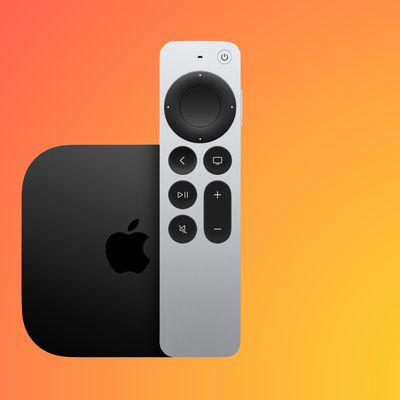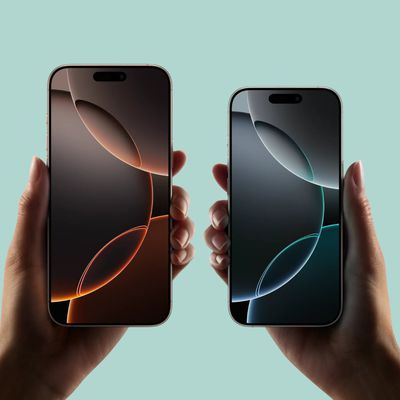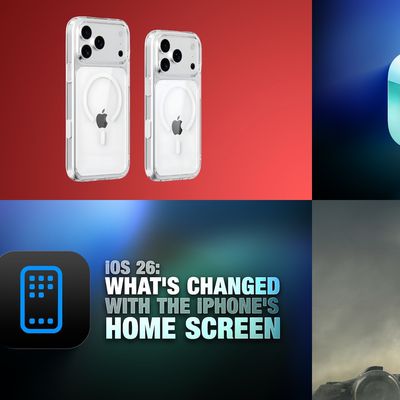Apple Seriously Considered Switching to AMD in 2011 MacBook Air
 In an upcoming profile of AMD, Forbes reports that the company's Llano family of Fusion combination CPU-GPU systems was under consideration by Apple to be used as the brains behind the MacBook Air for its 2011 revision. AMD lost out to Intel, however, as the necessary parts were late in being delivered to Apple and had unacceptably high failure rates.
In an upcoming profile of AMD, Forbes reports that the company's Llano family of Fusion combination CPU-GPU systems was under consideration by Apple to be used as the brains behind the MacBook Air for its 2011 revision. AMD lost out to Intel, however, as the necessary parts were late in being delivered to Apple and had unacceptably high failure rates.
AMD struggled with its new fabless model while trying to crank out “fusion” processors that combined a CPU and a GPU in a single part. On paper the idea was promising. A notebook processor dubbed “Llano” got a close look from Apple for an update to the ultralight MacBook Air, scheduled for launch in mid-2011.
But AMD couldn’t get early working samples of Llano to Apple on time, one former employee says. Several former AMD employees disagree on just how close AMD came. “We had it,” one says. But too many of the Llano parts were faulty. AMD lost the deal.
The company reportedly also pitched Apple on using its Brazos family of Fusion systems in the Apple TV, but Apple proved to be uninterested in the proposal.
Forbes' Brian Caulfield has more on AMD's efforts to lure Apple in a separate article in which he talks further about yield issues on the Fusion chips planned for the MacBook Air.
The claim echoes a November report from SemiAccurate alleging that AMD's Fusion platform was Apple's "Plan A" for the 2011 MacBook Air and that such machines were "on the verge of production" before Apple ultimately decided to stick with Intel.
Apple had been struggling with chip options in its small portables for several years as licensing issues prevented graphics companies such as NVIDIA from developing integrated graphics solutions for Intel's latest processors. With Apple being forced to choose between slower Core 2 Duo processors paired with fast NVIDIA graphics and faster Intel Core i-series processors hampered by slow integrated graphics from Intel, Apple opted to continue using the aging Core 2 Duo processors for much longer than it would have otherwise liked.
Improvements in Intel's integrated graphics did allow Apple to transition to significantly improved Core i5 and i7 processor in the current generation of MacBook Air models, but it seems that Apple was also weighing AMD's offerings as it sought to work its way out of the constraints of Intel's graphics issues.
Popular Stories
A new Apple TV is expected to be released later this year, and a handful of new features and changes have been rumored for the device.
Below, we recap what to expect from the next Apple TV, according to rumors.
Rumors
Faster Wi-Fi Support
The next Apple TV will be equipped with Apple's own combined Wi-Fi and Bluetooth chip, according to Bloomberg's Mark Gurman. He said the chip supports ...
Apple will launch its new iPhone 17 series in two months, and the iPhone 17 Pro models are expected to get a new design for the rear casing and the camera area. But more significant changes to the lineup are not expected until next year, when the iPhone 18 models arrive.
If you're thinking of trading in your iPhone for this year's latest, consider the following features rumored to be coming...
Apple's next-generation iPhone 17 Pro and iPhone 17 Pro Max are only two months away, and there are plenty of rumors about the devices.
Below, we recap key changes rumored for the iPhone 17 Pro models.
Latest Rumors
These rumors surfaced in June and July:A redesigned Dynamic Island: It has been rumored that all iPhone 17 models will have a redesigned Dynamic Island interface — it might ...
The long wait for an Apple Watch Ultra 3 is nearly over, and a handful of new features and changes have been rumored for the device.
Below, we recap what to expect from the Apple Watch Ultra 3:Satellite connectivity for sending and receiving text messages when Wi-Fi and cellular coverage is unavailable
5G support, up from LTE on the Apple Watch Ultra 2
Likely a wide-angle OLED display that ...
iPhone 17 Pro and iPhone 17 Pro Max models with displays made by BOE will be sold exclusively in China, according to a new report.
Last week, it emerged that Chinese display manufacturer BOE was aggressively ramping up its OLED production capacity for future iPhone models as part of a plan to recapture a major role in Apple's supply chain.
Now, tech news aggregator Jukan Choi reports...
The iOS 26 public beta release is quickly approaching, while developers have recently gotten their hands on a third round of betas that has seen Apple continue to tweak features, design, and functionality.
We're also continuing to hear rumors about the iPhone 17 lineup that is now just about right around the corner, while Apple's latest big-budget film appears to be taking off, so read on...
 In an upcoming profile of AMD, Forbes reports that the company's Llano family of Fusion combination CPU-GPU systems was under consideration by Apple to be used as the brains behind the MacBook Air for its 2011 revision. AMD lost out to Intel, however, as the necessary parts were late in being delivered to Apple and had unacceptably high failure rates.
In an upcoming profile of AMD, Forbes reports that the company's Llano family of Fusion combination CPU-GPU systems was under consideration by Apple to be used as the brains behind the MacBook Air for its 2011 revision. AMD lost out to Intel, however, as the necessary parts were late in being delivered to Apple and had unacceptably high failure rates.

















